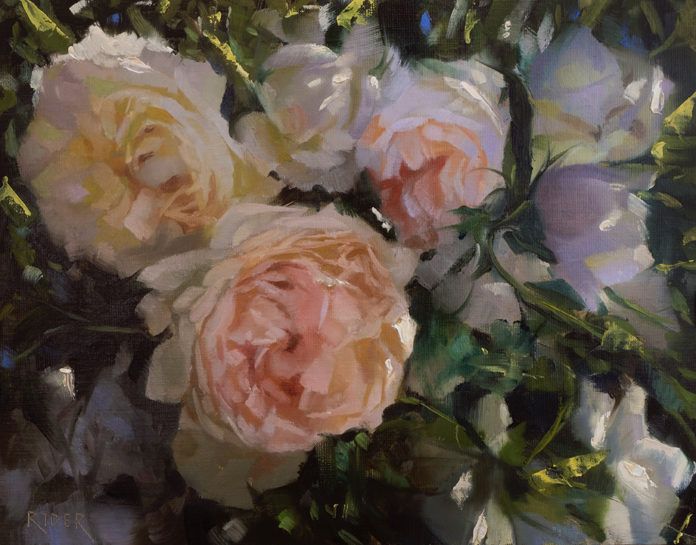How to Paint Realistic Still Lifes > Matt Ryder is known for his realistic still lifes and landscapes; learn his techniques at Plein Air Live in 2023, and get a preview of his process here.
The Pursuit of Painting Light: Realistic Still Lifes and More
BY MATT RYDER
www.ryderscanvas.com
Painting light that feels natural is without doubt one of the biggest challenges for artists that pursue painting realism. To create the illusion that there is a sense of space and air using just pigment, canvas, and brush, an artist must truly understand how light affects everything that it touches and even the areas that it doesn’t.
When I start a new flower painting, I will always look to my experience painting out in the open air, whether I’m painting a still life setup or using a photo reference. This experience of plein air painting, be it a landscape or a flower garden, is absolutely essential to my studio practice. The aim for me is to have every painting feel natural and filled with light, allowing the painting to become a window into a very real feeling place.
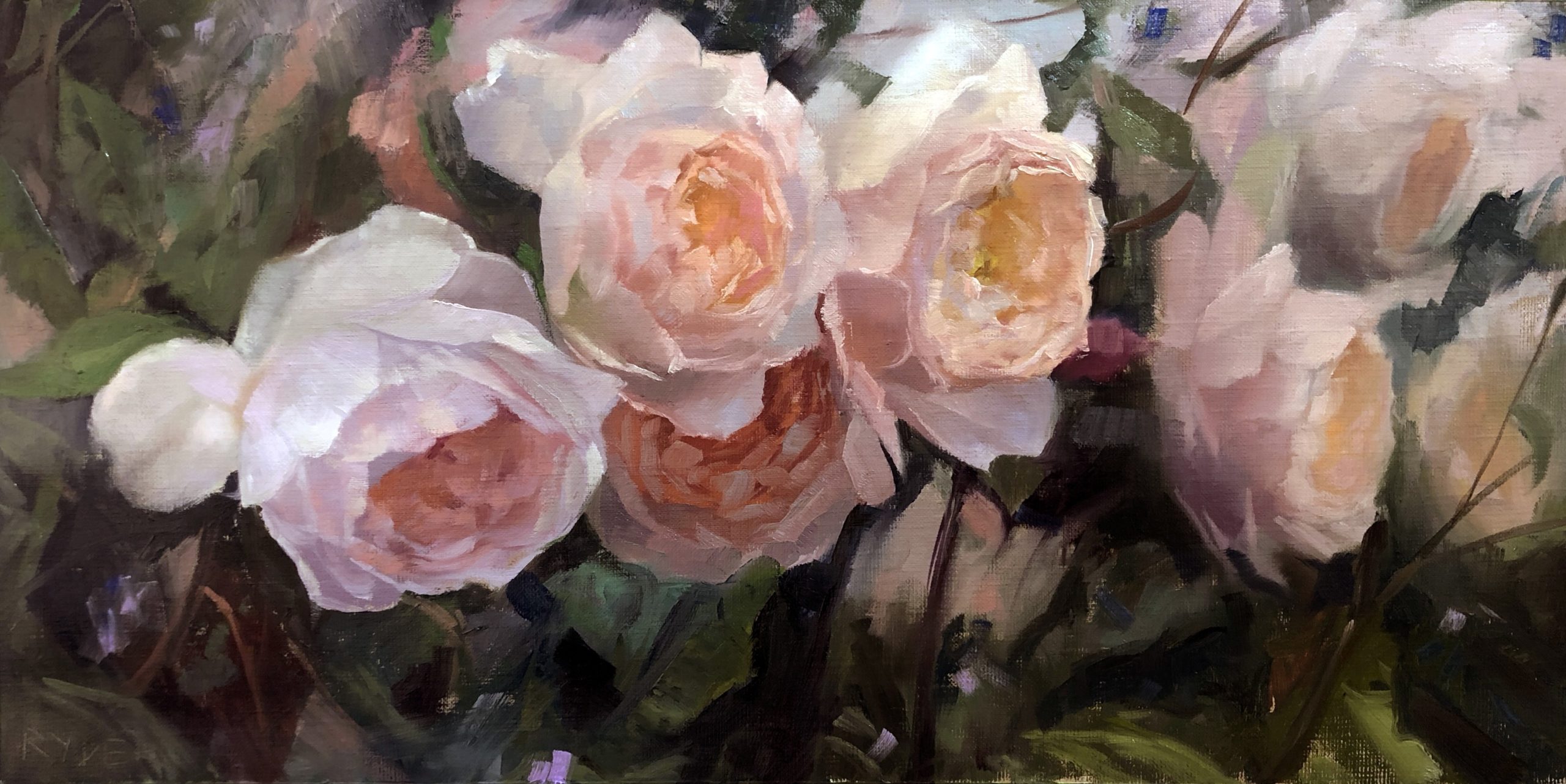
When creating my compositions, I always look for strong contrasting areas of light and shadow. I want to get as bright and light as I can and as dark as I can, ensuring that I don’t overcomplicate things. Flower painting is complicated enough without further overcomplicating a composition by not knowing what shapes and what colors go where! I use hard and soft edges to allow the flowers to feel more natural in their environment, often fully abstracting background elements that will create a vignette of sorts, that lead the eye to what’s important in each painting.
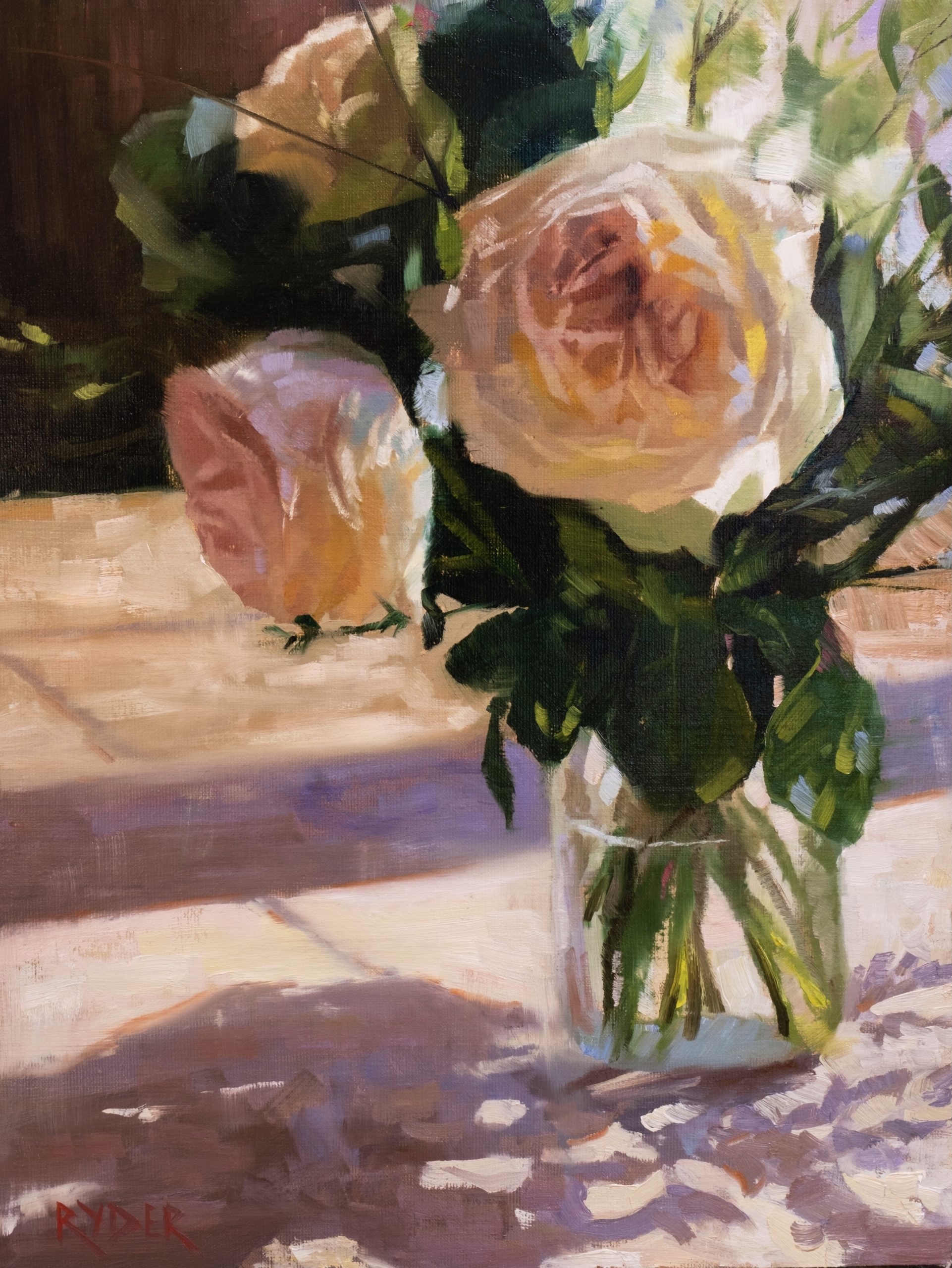
When using photos, I will usually manipulate the images in Photoshop to better replicate what I observed when I took the photo. Almost always that will involve lightening the shadows and adjusting the color. Without the experience of painting from life, this part of the process would be fruitless. I believe one must fully observe nature before embarking on the tricky task of painting it.
A photograph will never pick up a subtle violet or a hint of orange, a pure cobalt or cool viridian, but when you paint so much outside of the studio an artist can begin to bring those nuances of color into the work, even exaggerating nature but still ensuring the image feels true to life and working from a monitor no longer becomes a hindrance; it just becomes another part of the process.
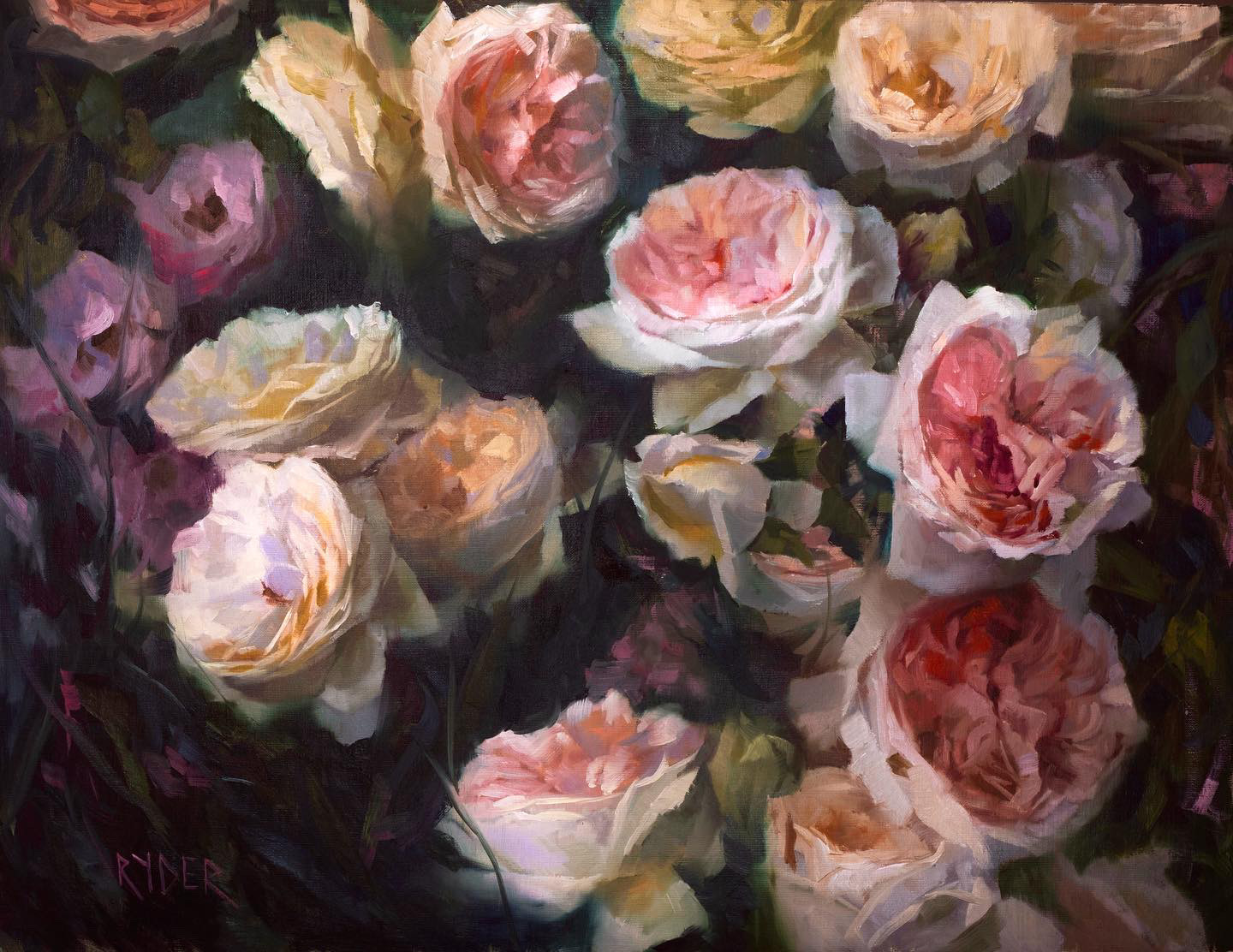
I take inspiration from the masters of the past, such as Sorolla, Sargent, Monet, Renoir, Levitan, and so many more. These are artists who truly understood the importance of light and how much it can affect the mood of the painting. By bringing these ideas into contemporary painting we can get the best of both worlds, combining traditional methods and technology to create our work today.
The more that I paint, regardless of subject, the more I understand I am on a lifetime pursuit to paint light and it is taking me on a joyous journey of observation and study of our beautiful world.
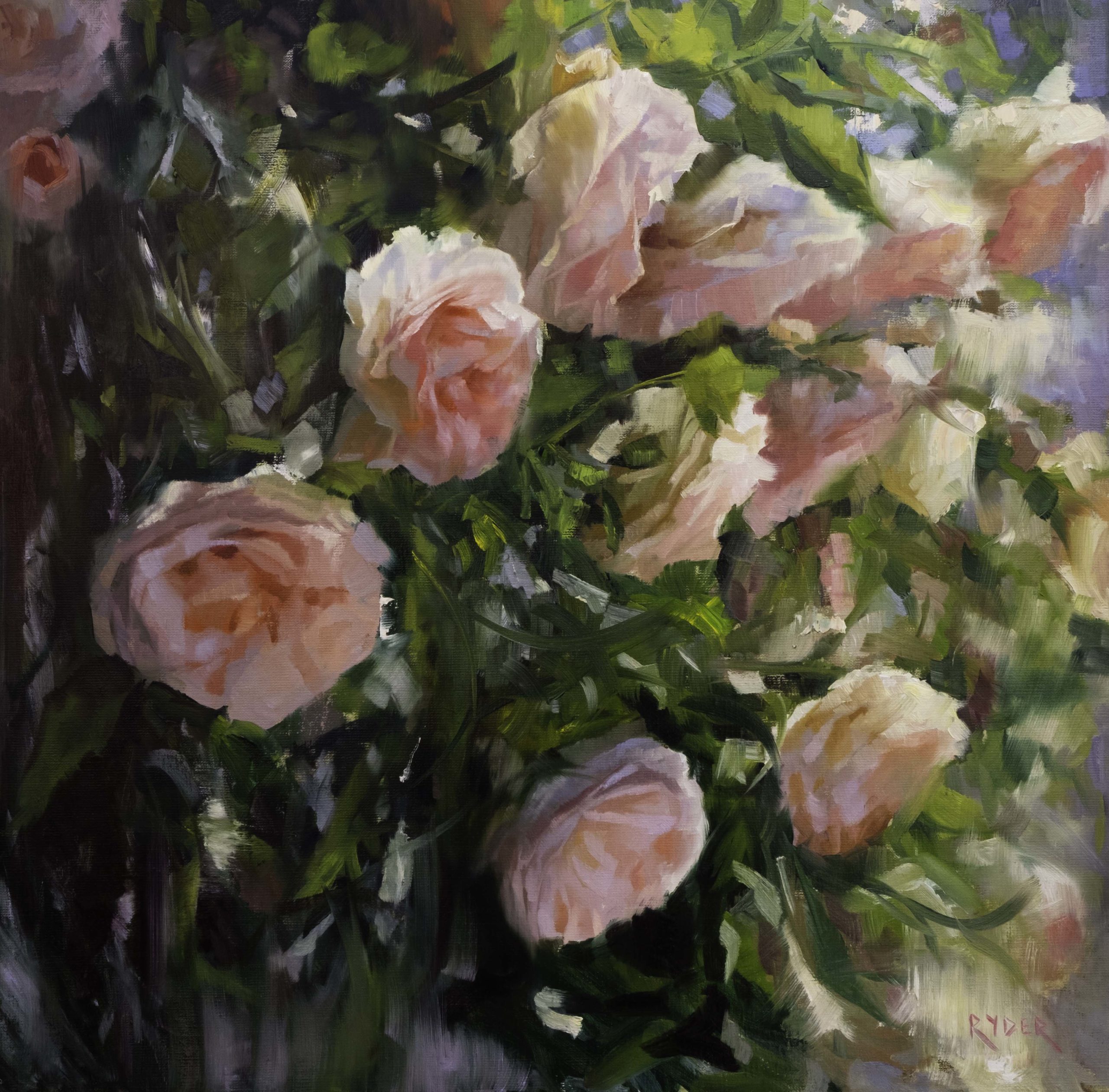
Helpful Links:
- Discover more articles about Matt Ryder at our sister site, OutdoorPainter.com
- Study with him during Plein Air Live in 2023
- Master the art of painting believable rocks with Matt Ryder’s PaintTube.tv workshop,
“Painting Rocks and Sunlight”


